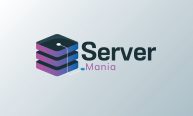Cloud computing has revolutionized the way businesses and individuals store, access, and manage data and applications. This technological paradigm shift offers a plethora of benefits, including scalability, cost-efficiency, and enhanced collaboration. Understanding the key terms that define cloud computing is essential for navigating this rapidly evolving landscape. In this article, we will delve into the fundamental concepts, types of cloud computing models, security concerns, and future trends in the realm of cloud computing.
Introduction to Cloud Computing
Cloud computing is like having a super cool friend who stores all your stuff online so you can access it from anywhere. It’s basically using the internet to access and store data and run applications instead of relying on your own computer’s hard drive.
Definition of Cloud Computing
In simple terms, cloud computing is like renting computing power, storage, and services over the internet. It’s a pay-as-you-go model that allows individuals and businesses to access and use resources without the need for extensive hardware and software installations.
Evolution of Cloud Computing
Cloud computing has come a long way from being just a buzzword to becoming an essential part of our digital lives. It has revolutionized the way we store, access, and share information, making technology more accessible and scalable for everyone.
Types of Cloud Computing Models
Just like flavors of ice cream, cloud computing comes in different models to suit different needs and preferences. Here are the main ones:
Infrastructure as a Service (IaaS)
IaaS is like renting a virtualized infrastructure, including servers, storage, and networking, to build your own IT environment without the need to buy and maintain physical hardware.
Platform as a Service (PaaS)
PaaS is like having a ready-made platform for developing, testing, and deploying applications without worrying about the underlying infrastructure. It’s like a DIY kit that makes app development easier and faster.
Software as a Service (SaaS)
SaaS is like using software applications that are hosted in the cloud and accessed over the internet. It’s like subscribing to your favorite streaming service but for business tools like email, CRM, or project management.
Key Elements of Cloud Computing
To understand cloud computing better, let’s break down its key elements:
Virtualization
Virtualization is like playing make-believe with your computer, where you create virtual versions of hardware, storage, and networks to maximize efficiency and flexibility in the cloud.
Scalability
Scalability is like having an elastic waistband on your favorite pants – it allows you to easily adjust resources up or down based on your needs, helping you avoid the dreaded “This application is unavailable” message.
Automation
Automation is like having a personal assistant for your cloud tasks, helping you streamline processes, reduce human error, and make your cloud experience more efficient and hands-free.
Benefits of Cloud Computing
Using cloud computing comes with a bunch of perks that make life easier in the digital age:
Cost Efficiency
Cloud computing can save you money by reducing the need for costly hardware and maintenance, allowing you to pay only for the resources you use, like a cafeteria for tech services.
Flexibility and Scalability
With cloud computing, you can easily scale your resources up or down based on demand, giving you the flexibility to adapt to changing business needs without breaking a sweat.
Enhanced Collaboration
Cloud computing fosters collaboration by enabling teams to work together seamlessly, regardless of their physical location. It’s like having a virtual office where everyone can brainstorm, create, and innovate in real time.# Security Concerns in Cloud Computing
## Data Privacy and Protection
When it comes to cloud computing, keeping your data safe and sound is crucial. Think of it like putting your secrets in a digital safe; you want to make sure that only the right people have the combination to access them.
## Compliance and Regulations
Navigating the legal landscape of cloud computing can feel like trying to drive in rush hour traffic – full of rules and regulations you need to follow. Staying compliant with laws and industry standards is key to avoiding any unwanted fines or penalties.
# Key Terms in Cloud Computing
## Virtual Machine (VM)
A virtual machine is like a digital chameleon – it can transform into different operating systems or software environments without skipping a beat. Think of it as your tech-savvy friend who can speak multiple computer languages.
## Cloud Service Provider (CSP)
When you need a digital helping hand, a cloud service provider has got your back. They offer services like storage, processing power, and software applications in the cloud, so you can focus on your own digital adventures without breaking a sweat.
# Future Trends in Cloud Computing
## Edge Computing
Imagine a cloud that’s right on your doorstep, ready to spring into action at a moment’s notice. Edge computing brings the power of the cloud closer to where you need it, reducing lag time and keeping your data processing speedy and efficient.
## Hybrid Cloud Solutions
Why settle for just one flavor of cloud when you can have the best of both worlds? Hybrid cloud solutions combine the flexibility of public clouds with the security of private clouds, giving you a customizable digital playground to suit your every need.As cloud computing continues to shape the digital world, staying informed about its key terms and concepts is crucial for organizations and individuals seeking to leverage its advantages. By grasping the nuances of virtualization, scalability, and security in the cloud, stakeholders can make informed decisions that drive innovation and efficiency. Embracing the evolving trends in cloud computing, such as edge computing and hybrid solutions, will further propel the transformative power of this technology. With a solid understanding of the key terms that describe cloud computing, one can navigate this dynamic landscape with confidence and adaptability.
